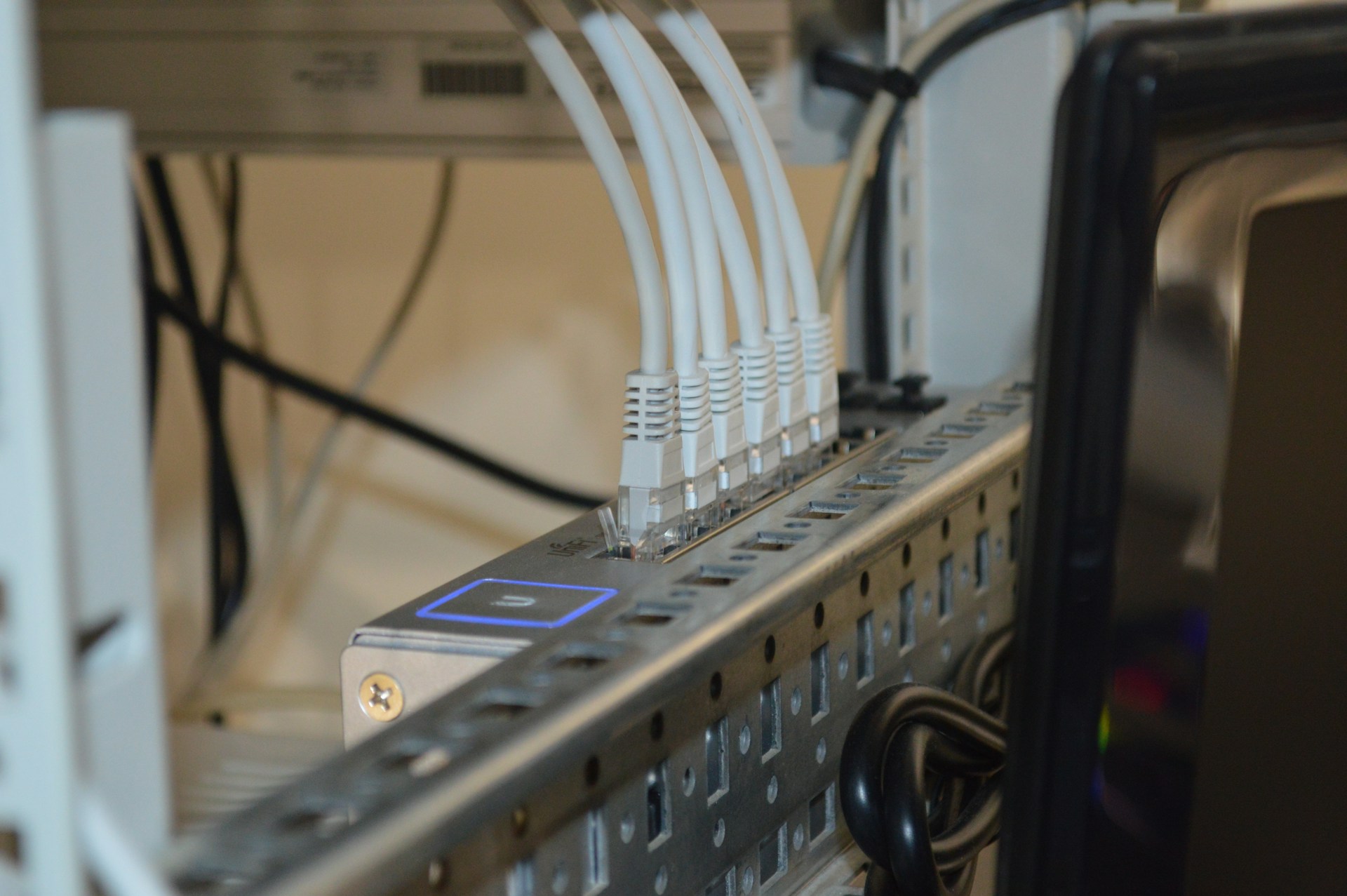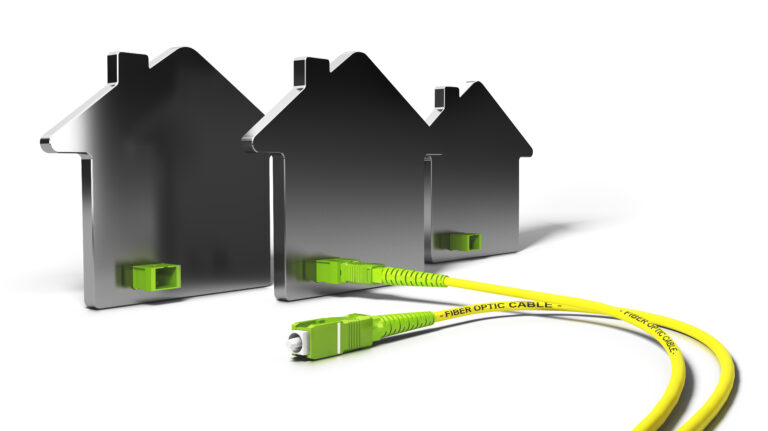EoFTTC Explained: Meaning, Speeds & Providers
If you want to bridge the gap between fibre and copper technologies, an Ethernet over Fibre to the Cabinet (EoFTTC) connection might be the best option. It delivers superior speeds, bandwidth and Service Level Agreements (SLAs) without breaking the bank.
Curious? Keep reading as we explain everything you need to know about this innovative business broadband solution, including some of the pros, cons and alternatives.

What is EoFTTC?
EoFTTC is a hybrid broadband solution that uses fibre-optic and copper cables to deliver a high-speed internet connection.
Fibre-optic cables transmit data from the core network to the street cabinet. Then, copper cables and Very High-Speed Digital Subscriber Line (VDSL) technology transmit data from the street cabinet to the business premises.
Above all else, EoFTTC takes advantage of existing infrastructure, so you don’t have to worry about expensive, time-consuming installations (more on this later). Once you’ve found a trustworthy EoFTTC provider, they’ll usually have you up and running within 30 days.
What’s the difference between FTTC and EoFTTC?
So, what’s the difference between FTTC and EoFTTC? It’s something we get asked a lot by businesses hunting for the perfect broadband package.
Fibre to the Cabinet (FTTC) works similarly to EoFTTC in the sense that fibre-optic cables connect the core network to the street cabinet, and copper cables connect the street cabinet to the business premises. However, EoFTTC introduces the benefits of Ethernet, such as dedicated leased lines and symmetrical bandwidths.
You can think of EoFTTC as a step up from FTTC. Although slightly more expensive, it’s packed with premium functionality to support increased data demands.
What are the benefits of EoFTTC?
Now we’ve defined our terms, let’s discuss why EoFTTC is the best choice for many businesses. On top of providing faster speeds for conference calls, large file transfers and collaborative working, it’s often more reliable than other broadband types, including FTTC.
Some businesses actually choose EoFTTC over fibre leased lines because they need speed, pronto. The ease of installation and promise of symmetrical bandwidth at a fairly reasonable cost often sways their decision.
Uncontended connection and lightning speeds
Many EoFTTC providers offer uncontended connections, meaning you don’t have to share resources with other users. You’ll receive all the bandwidth, speed and uptime – paired with unlimited data.
Imagine how much more you’ll get done when you don’t have to worry about someone else’s data usage or busy peak times. As the only user, you’ll always have the network’s full power capacity behind you, with watertight uptime guarantees.
Our EoFTTC package delivers up to 19 Mbps symmetrical speed and 76 Mbps download burst speed, which is more than enough for most businesses.
Symmetrical bandwidth
Perhaps most importantly, EoFTTC promises symmetrical bandwidth, which is a unique selling point for nearly all fibre-optic connections.
What is symmetrical bandwidth? Put simply, it’s when the upload and download speeds are exactly the same. It’s ideal for organisations that:
- Handle large data transfers
- Use online collaboration tools, such as Microsoft Office 365
- Have several business locations
- Rely on cloud-powered software
- Plan on scaling up and need room for growth
Symmetrical bandwidth is also great for businesses that hire remote workers because there’s a greater need for media sharing. Productivity will soar without the vulnerabilities of legacy broadband, including lag and data bottlenecks.
Fast and easy installation
If you’re searching for a quick and easy broadband upgrade, you can’t go wrong with EoFTTC. It piggybacks off existing infrastructure, so it’s surprisingly easy to install. Consequently, you don’t have to invest in brand-new cables or plan for lengthy service disruption.
How long does it take to install EoFTTC? Typically, 15 to 30 days. In contrast, full Ethernet solutions often take much longer unless there’s already fibre in the area.
Comprehensive SLAs
SLA stands for Service Level Agreement. It’s a contract between the host and client outlining the exact terms of service. It covers things like:
- What services will be provided
- How will the standard of service be measured
- What happens if the standard of service isn’t met
- What security measures are in place to protect sensitive data
- What steps will be taken in the event of a security breach
- How does the host measure and respond to risk
- Uptime guarantees and what compensation to expect if these are violated
- Conditions of cancellation
Negotiating a comprehensive SLA is crucial. Otherwise, you might get stuck with a rotten deal and no clear exit strategy.
Luckily, unlike some other EoFTTC providers, we prioritise quality customer service for unbeatable peace of mind. This includes a seven-hour fault fix time.
Fairly cost-effective
Although EoFTTC is more expensive than other broadband connections, including FTTC, Single Order Generic Ethernet Access (SoGEA) and Full Fibre To The Premises (FTTP), it’s still affordable for most businesses.
In reality, Ethernet Fibre Leased and Ethernet First Mile (EFM) lines are the most expensive, offering breathtaking bandwidth of up to 1 Gbps. If you’re a large organisation with significant data demands, you might want to consider one of these packages instead (we’ll discuss alternatives to EoFTTC below).
Our EoFTTC package slots comfortably between the two price brackets, starting from £89.99 per month. For this, you’ll receive mission-critical connectivity, free installation on a three-year contract and UK-wide coverage.
Unparalleled customer support
Understandably, premium business broadband solutions deliver outstanding customer support – cheaper deals simply cannot compete. Basically, you get what you pay for.
Here at Swift Internet, we’re committed to delivering gold-standard customer service. We provide remote support free of charge for troubleshooting and configuration issues. Plus, our high availability guarantee keeps downtime to a minimum, meaning you don’t have to worry about losing profits.
We’ve also compiled a comprehensive knowledge base of blog posts, how-to guides and support articles, which run through the best practices and latest news. With our guidance, you might be able to solve the less complex issues quickly in-house.
What are the cons of EoFFTC?
So, are there any disadvantages of EoFTTC? Like anything, it might not be the best option for some businesses, or there may simply be more suitable alternatives out there.
While it’s fresh in our minds, let’s start with cost. We honestly believe EoFTTC is a reasonable and worthwhile investment. That said, small businesses, start-ups and individuals might prefer a cheaper solution – at least until they have a better idea of their data requirements. There’s no point paying for functionality you don’t actually need.
Next is signal deterioration. EoFTTC relies on VDSL technology, which can be affected by nearby electrical signals. Tonnes of everyday objects cause electromagnetic interference, including mobile phones, radios, televisions, motors and kitchen appliances.
Lastly, the distance between the fibre cabinet and the business premises can impact speed. Ultimately, you’ll still be constrained by the quality of the existing infrastructure.
How much does EoFFTC cost?
We’ve touched on this briefly, but our EoFTTC solutions start from just £89.99 per month. This is slightly under the UK average of around £95 per month – without compromising the quality of service, of course.
The overall price of EoFTTC depends on the provider, type of line and business location. For example, EoFTTC might only make financial sense if there’s existing infrastructure. Otherwise, you’ll have to factor in the additional installation cost.
If you’re hoping for an even cheaper deal, some EoFTTC providers offer contended connections. However, this means you’ll share the line with other users and might notice performance issues as a result.
Are there any alternatives to EoFTTC?
Suitable alternatives to EoFTTC depend on budget. Full Ethernet solutions make the most sense because they emphasise performance. You’ll enjoy the many rewards of a fibre-optic connection to a much higher standard.
However, this can be expensive and beyond the means of small to medium-sized businesses. As such, we suggest exploring something like a dedicated FTTP line.
FTTP is fully fibre-optic like premium Ethernet networks, offering the same uncontended connections, quality bandwidth and detailed SLAs. Best of all, it’s future-proof. FTTC services are gradually losing their appeal as providers phase out technology that relies heavily on the old copper infrastructure.
If you’re interested in FTTP, our packages start from £37.99 per month. There are several deals to suit all requirements and budgets, with unlimited data transfer and speeds up to 1 Gps.
Upgrade your business broadband to EoFTTC
EoFTTC is a brilliant option for medium to large-sized businesses that need increased storage, performance and security. If you want to upgrade your business broadband to this hybrid solution, Swift Internet can help you every step of the way.
We have plenty of deals to suit all requirements and budgets. Plus, our expert team will take care of the installation, so you can sit back, relax, and carry on with the day-to-day tasks of running a business.
If you need more help finding the perfect business broadband solution, please get in touch today. We’ll take you through all the options with no pressure to commit. Simply email sales@nullswiftinter.net or call 03330 347500, and we’ll get back to you as soon as possible.




